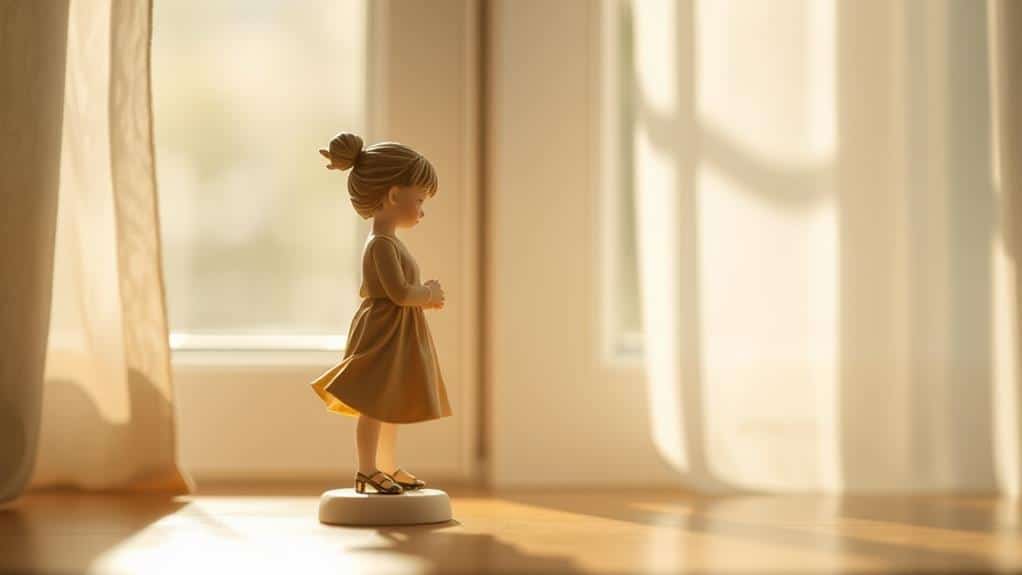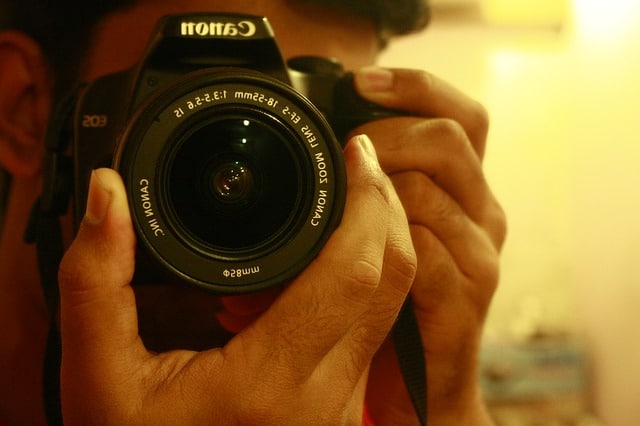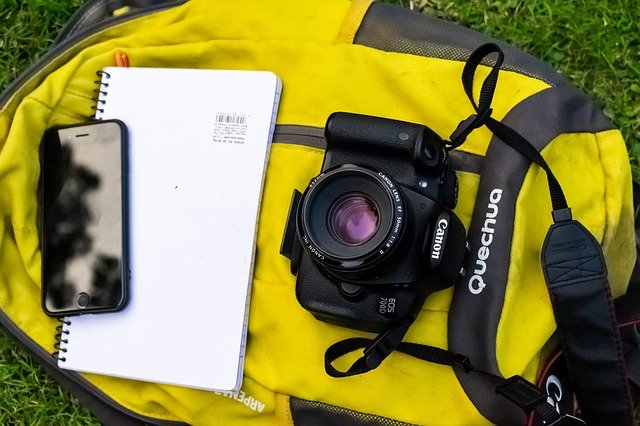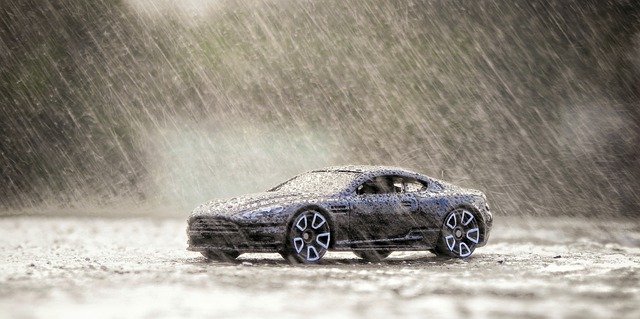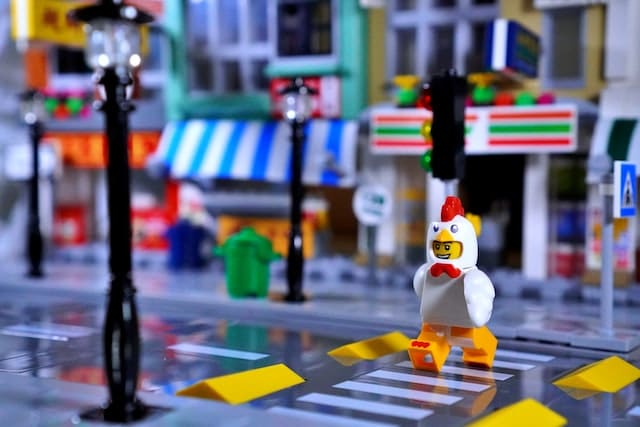You should use natural light for figurine photos because it enhances vibrant colors and captures intricate details. It provides a balanced and lifelike look without harsh shadows or glaring reflections. By shooting during the golden hours, you can create gentle shadows that add depth. Positioning your figurines correctly with diffused light from sheer curtains will guarantee details shine without overpowering highlights. Reflectors can be used to direct sunlight and brighten up areas, enhancing the overall appearance. Additionally, natural light is cost-effective and eco-friendly. To uncover more techniques and tips, consider exploring further into the art of natural light photography. Experimentation is key to mastering the best natural light tips, so don’t hesitate to adjust angles or try new setups to see what works best for your figurines. Remember to avoid direct midday sunlight, as it can create harsh contrasts and overpower the delicate features of your subject. With patience and practice, you’ll soon discover how to make the most of natural light to bring your figurine photography to life.
Benefits of Natural Light
When it comes to photographing figurines, natural light can really step up your game. You'll find that it enhances colors and details without the harshness artificial lights sometimes introduce. Natural light gives your photos a balanced look, making the figurines appear more lifelike and vibrant. You'll notice textures and subtle features pop, adding depth and dimension to your shots. This kind of lighting minimizes harsh shadows and glaring reflections, which can often detract from the overall quality of your photos.
Using natural light also simplifies your setup. You won't need to fiddle with multiple light sources or complicated equipment. Just position your figurines near a window or in a well-lit area, and you're good to go. This ease of use means you'll spend less time adjusting and more time capturing the perfect shot.
Moreover, natural light is cost-effective. You don't have to invest in expensive lighting kits or pay extra for electricity. You're using a resource that's freely available, making it an eco-friendly choice as well. By leveraging natural light, you elevate your photography without the need for additional resources, keeping the focus on your creative process.
Choosing the Right Time
Incorporating natural light into your figurine photography is just the start; timing plays a key role in achieving the best results. The time of day you choose can drastically impact the quality and mood of your photos. Early morning and late afternoon, often referred to as the "golden hours," provide a soft, warm light that's ideal for capturing intricate details and textures. During these times, the sun is lower in the sky, casting long, gentle shadows that add depth to your compositions without being too harsh.
Avoid shooting during midday when the sun is at its peak. The light then is often too strong, creating harsh shadows and potential glare that can detract from your figurine's features. If you must shoot at this time, look for shaded areas or use a diffuser to soften the harsh light.
Cloudy days are also fantastic for figurine photography. The clouds act as a natural diffuser, spreading light evenly and minimizing shadows. This condition allows you to capture the true colors and details of your figurines without overexposure. Remember, experimenting with different times and weather conditions can help you discover the perfect lighting for your unique style.
Positioning Your Figurines
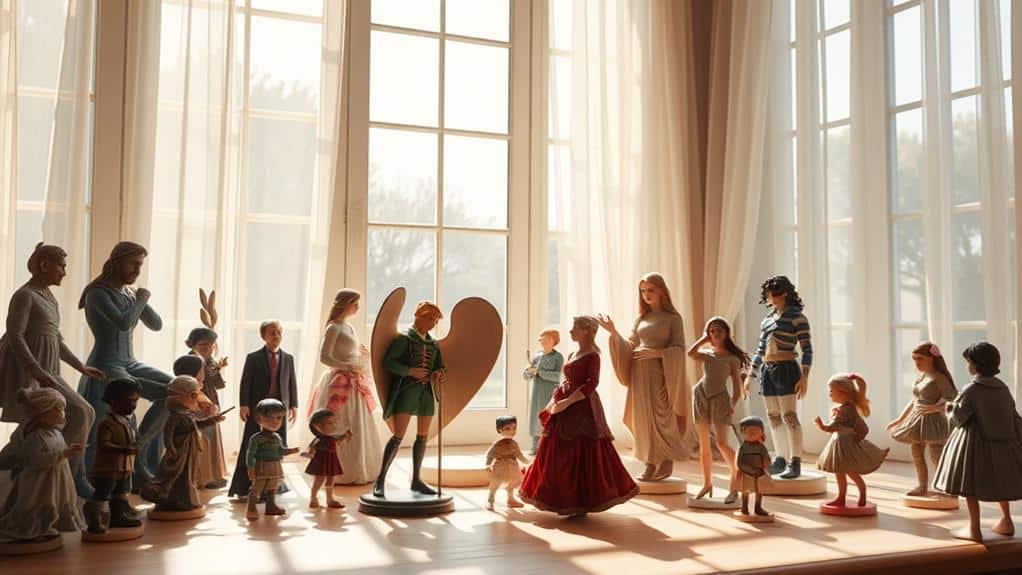
Proper positioning of your figurines is essential for capturing stunning photographs. Begin by setting your figurine at eye level to create a sense of intimacy and realism in the shot. You can use a table or stack of books to achieve this height. Consider the angle from which you're shooting as well. A slight tilt or rotation can add depth and showcase intricate details that might not be visible from a frontal view.
Next, focus on the background. A clean, uncluttered background allows your figurine to be the star of the photo. You might use a plain wall or a piece of fabric to achieve this effect. Confirm there's enough distance between the background and the figurine to prevent any unwanted shadows.
Another important aspect is the orientation of the figurine relative to the light source. Natural light, such as from a window, should illuminate the figurine's features without causing harsh glares. Experiment with turning the figurine slightly to find the best angle where the light enhances rather than obscures your subject.
Lastly, consider the figurine's pose. If it's adjustable, slightly altering the pose can convey different emotions or actions, adding life to your photos.
Controlling Shadows Effectively
Shadows play an essential role in figurine photography, and learning to control them can elevate your images. When working with natural light, shadows add depth and dimension, highlighting details that might otherwise go unnoticed. To effectively manage shadows, start by observing how light interacts with your figurine. Notice the direction of the light and how it casts shadows on and around the figurine.
Position your figurine in a way that complements its features. Sometimes, angling the figurine slightly can create interesting shadow patterns that enhance the composition. Don't be afraid to experiment with different times of day, as the sun's position dramatically affects shadow length and intensity. Morning and late afternoon often provide softer, more flattering light, while midday light can create harsh, defined shadows.
Consider your background when controlling shadows. A textured or colorful backdrop can interact with shadows in intriguing ways, adding to the overall mood of your photo. Pay attention to shadows' edges, too; soft, diffused shadows usually work better for a gentle look, whereas sharp shadows add drama. By mastering shadow control, you'll bring your figurine photography to a new level.
Utilizing Reflectors

As you explore deeper into figurine photography, utilizing reflectors becomes an invaluable skill. Reflectors help you manipulate natural light to achieve the desired effects without needing artificial sources. By bouncing light back onto your figurine, you can brighten shadows and create a more balanced image. It's a simple process that enhances your photos considerably.
First, choose the right reflector. They come in various colors—white, silver, gold, and even black. White reflectors offer a soft, natural fill light, while silver provides a stronger, more intense light that's great for highlighting details. Gold can add warmth, giving your photos a cozy, inviting tone. Black isn't a reflector per se but can be used to absorb light or create shadows where needed.
Positioning is key. Hold the reflector at an angle where it catches the natural light and redirects it toward the figurine. Experiment with distances and angles to see how the light changes. You might need to adjust your reflector as the sun moves throughout the day.
Don't forget that a piece of white poster board or aluminum foil can serve as a makeshift reflector if you're just starting. With practice, you'll master the art of utilizing reflectors to enhance your figurine photography.
Enhancing Colors Naturally
Enhancing the natural colors in your figurine photos can truly bring them to life. When you use natural light, colors appear more vibrant and accurate. This is because natural light covers the full spectrum, allowing each hue to stand out in its truest form. You avoid the artificial tint or harshness that can come from using artificial lighting sources like lamps or flashes. Instead, natural light provides a soft and even illumination that highlights the authentic tones of your figurines.
To maximize color enhancement, consider shooting during the golden hour, just after sunrise or before sunset. During this time, the sunlight is softer and warmer, which can add a beautiful glow to your photos, emphasizing the colors without overwhelming them. If you can't shoot during these times, try placing your figurines near a window with indirect sunlight to maintain the balance of light and shadow.
Experiment with different angles to capture how the light interacts with your figurine's surface. Notice how the colors shift with various light directions. By observing these changes, you can choose the angle that best enhances the colors, making your figurine photos truly pop with natural vibrancy.
Capturing Fine Details

While natural light enhances the colors of your figurine photos, it also plays a significant role in capturing fine details. The soft diffusion of sunlight brings out intricate textures and subtle nuances that artificial lighting often misses. When you position your figurine in natural light, you'll notice how it reveals the delicate craftsmanship—whether it's the etching on a miniature sword or the intricate patterns on a tiny cloak.
Natural light works wonders by reducing harsh shadows and preventing glare, both of which can obscure fine details. Unlike the stark contrast provided by artificial lights, sunlight offers a more balanced illumination. This balanced light allows your camera to focus on and capture the details that make each figurine unique. You'll find that the gentle shifts between shadows and highlights contribute to a more three-dimensional and realistic look in your photos.
To get the best results, place your figurines near a window where the light is diffused, such as through a sheer curtain, to maintain softness. Avoid direct sunlight, as it can be too harsh. With the right positioning, you'll capture the intricacies that make your figurines special, allowing their true artistry to shine.
Weather Considerations
When planning to use natural light for photographing your figurines, weather conditions can greatly impact your results. You might think a bright, sunny day is ideal, but it can actually cast harsh shadows and wash out details. Overcast days, while seemingly dull, provide soft, diffused lighting that's perfect for capturing the nuances of your figurines without harsh contrasts. Cloud cover acts like a natural lightbox, spreading light evenly across your subject.
If you're shooting outdoors, consider the time of day. The golden hours—shortly after sunrise and before sunset—offer warm, gentle light that can enhance colors and add a pleasing glow to your photos. During these times, the sun sits lower in the sky, reducing the intensity and creating more flattering shadows.
Wind is another factor to think about. A breezy day might disrupt your setup, especially if you're using lightweight backgrounds or props. Secure everything in place or choose a sheltered spot to avoid unwanted movement.
Avoiding Direct Sunlight

Direct sunlight can be a photographer's nemesis when capturing figurines. It casts harsh shadows and creates overly bright highlights, which can obscure your figurine's details. When you shoot under direct sunlight, you risk losing the subtle textures and intricate designs that make your figurine unique. Instead, aim for softer, diffused light to maintain clarity and detail in your photos.
To avoid direct sunlight, try positioning your figurines near a window with sheer curtains. These curtains will act as a natural diffuser, softening the light and reducing sharp contrasts. If you're outdoors, consider shooting during the golden hours—shortly after sunrise or before sunset—when the sunlight is naturally softer and warmer.
Another approach is to use reflectors or white surfaces, like a sheet of paper or a piece of foam board, to bounce light onto your figurine. This technique can help eliminate shadows without needing direct sunlight. Adjust the angle of the reflector until the light evenly illuminates your subject.
Frequently Asked Questions
How Can I Store My Figurines to Maintain Their Quality for Photography?
Store your figurines in a dust-free, controlled environment. Use display cases with UV protection to prevent fading. Keep them away from direct sunlight and high humidity. Regularly clean them with a soft brush to maintain their quality.
What Camera Settings Work Best for Capturing Figurines in Natural Light?
Use a low ISO to reduce noise, a wide aperture for background blur, and shutter speed to balance exposure. Keep white balance on auto if you're unsure. Experiment with angles to find the best lighting.
Should I Use Any Props to Enhance the Figurine's Appearance in Photos?
Think of props as the stage setting for your figurine's story. They can amplify its narrative, adding depth and imagination. Choose meaningful items that complement and highlight the figurine's essence, drawing viewers deeper into your artistic vision.
How Can I Create a Cohesive Background for My Figurine Photography?
To create a cohesive background for your figurine photography, choose a consistent color scheme that complements the figurine. Utilize materials like fabric or paper for texture, and make certain the background doesn't distract from the figurine itself.
What Are Some Common Mistakes to Avoid When Photographing Figurines?
Don't use harsh lighting, don't neglect the background, and don't forget to focus properly. Avoid busy backgrounds, shaky hands, and inconsistent angles. Keep your shots clear, your lighting soft, and your composition balanced for stunning results.
At a Glance
You've got all the tools to capture your figurines in their best light. By embracing natural light, you're painting with nature's brush, bringing out the rich colors and fine details with ease. Remember to time it right and position your figurines thoughtfully, while controlling shadows like a maestro. Use reflectors to bounce light and keep an eye on the weather. Avoid direct sunlight, and you'll let your figurines shine like stars in a soft, glowing sky.

